November hug
Between travel and an injured foot, it has been weeks since I’ve really spent time in the Park. The two hours I spent Monday felt like a great big hug.
The prairie grasses are everywhere announcing themselves. Even pros (one of whom I’m not), can struggle to identify prairie grasses when they are not blooming. But when they do, like right now, it’s as though they have raised their voices in song and what they sing is who on earth they are. I’m not going to show a ton of photos so you know the name of each one. Just take a moment and admire the waving fields of subtle blooms. I will be watching next year to see whether this seed bounty attracts spring migrating songbirds.
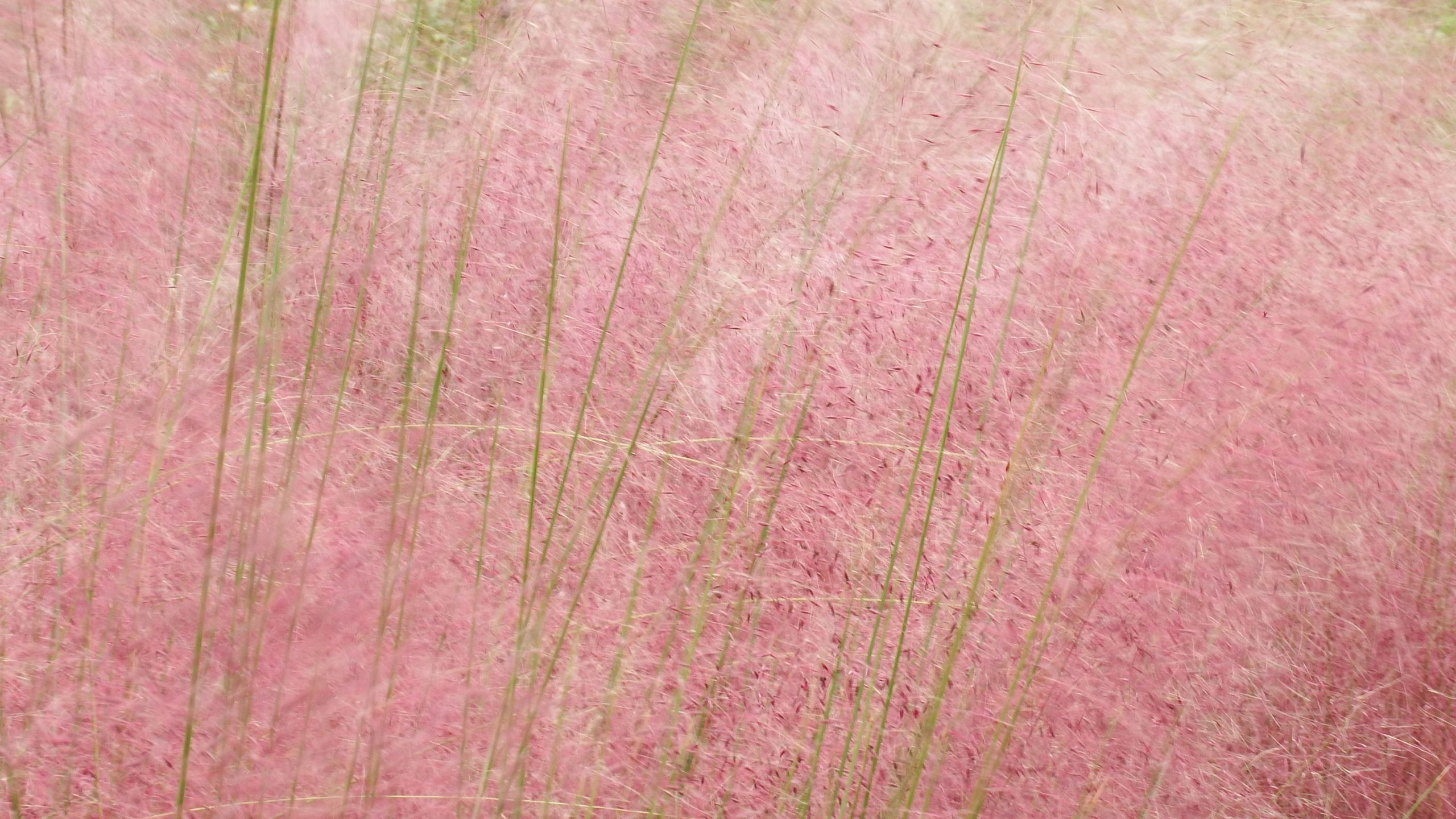
This is a close-up of gulf muhly in the Jane Gregory garden. You can just get lost in the pink.
Monday was warm, so the pollinators were out in force. Most of our native bees die at the end of summer having laid the eggs for next year’s crop. But bumblebees and carpenter bees can hibernate. I don’t know how deep their hibernation is because I saw quite a few carpenter bees and even one bumblebee. The literature says that in south Texas, carpenter bees are able to reproduce throughout the year. Perhaps that is starting here, as well.
Western honey bees are also year-round foragers. They store up honey against days that are too cold to fly and within the hive, take turns vibrating their wings, the friction from which keeps everyone warm on cold days. Northern bees will consume upwards of 30 lbs of honey in the winter. Here, they likely require only 20 because we get plenty of days warm enough to fly and something is always blooming.
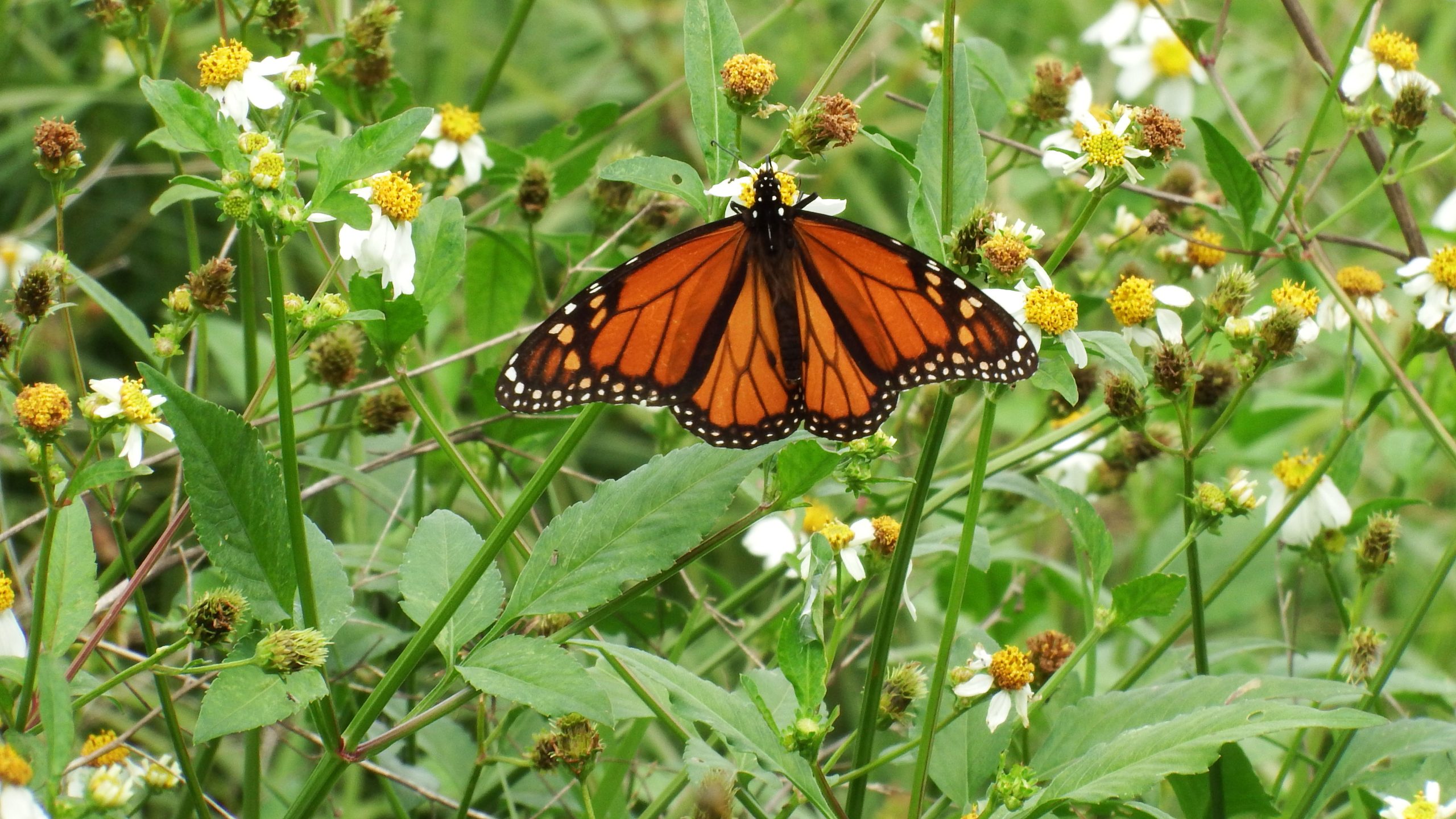
Monarch butterflies are migrating through Houston right now. This fellow stopped on some Bidens pitosi for a snack.
Right now, the big draws for pollinators in the Park are still goldenrods. They’ve been going strong for weeks now. The Bidens pitosi are also filling in nicely. They aren’t exactly native, but blooming all year, they are the workhorse pollinator in the Park.
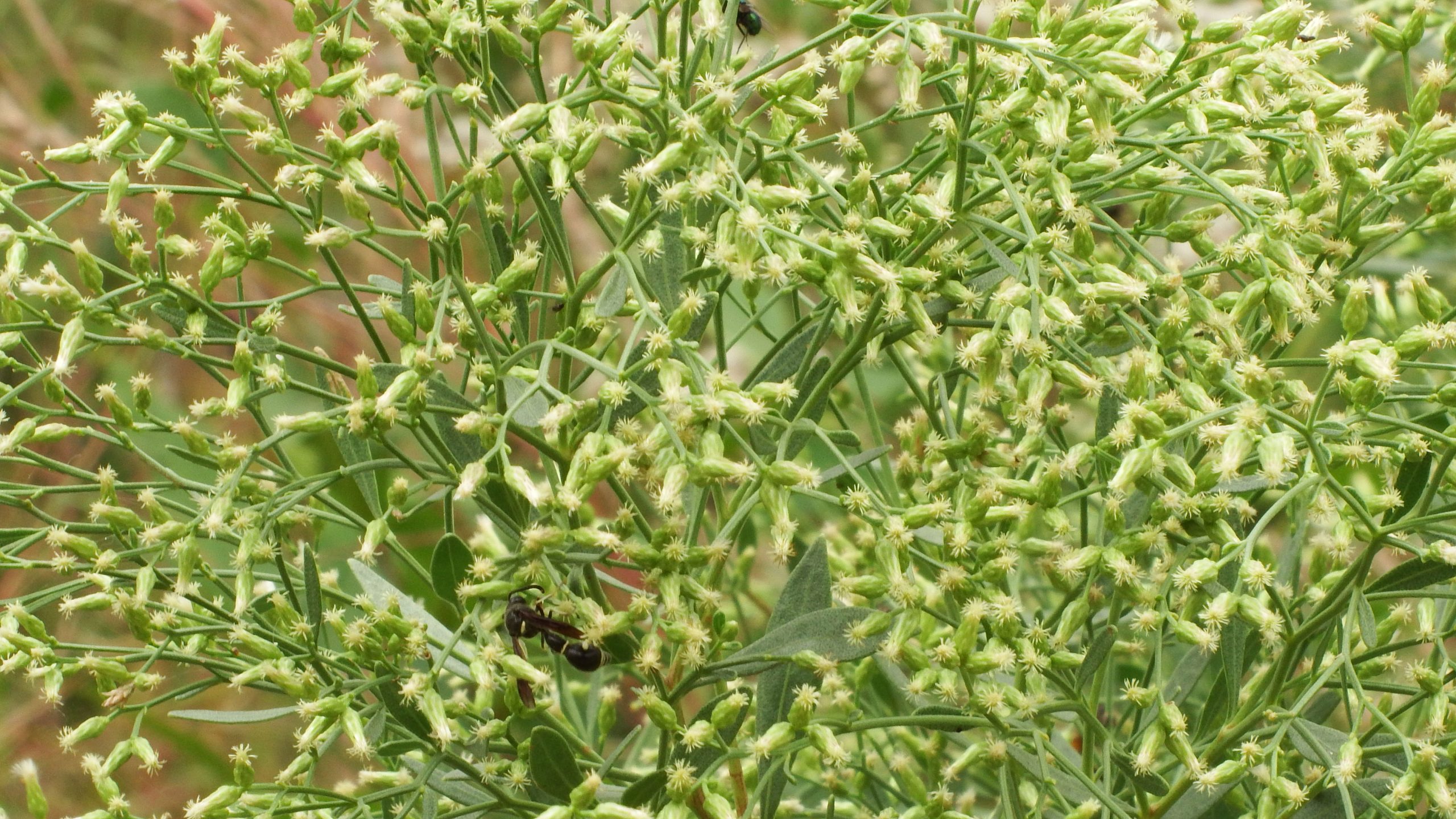
These male groundsel flowers don’t look like much, but every plant was aflutter with flies and wasps.
The surprise pollinators were the male groundsel trees. The male plants are kind of uninteresting and by the time the females get going (which is the next week or two), you wouldn’t notice the males anyway. But right now, they are full of wasps and flies. I don’t know why they don’t draw bees in the same numbers as other flowers. But wasps and flies were feasting.
I probably wouldn’t have paid attention to the painted spurge had it not been full of bees. I had no idea that painted spurge was a thing. Honestly, I didn’t know spurge was a thing. But upon further research, there is a spurge that you know from weeding your gardens and a spurge you know because it’s called a poinsettia. And now, there’s the painted spurge, which is a champion pollinator and there is absolutely nothing about this plant that would suggest that this would be the case.
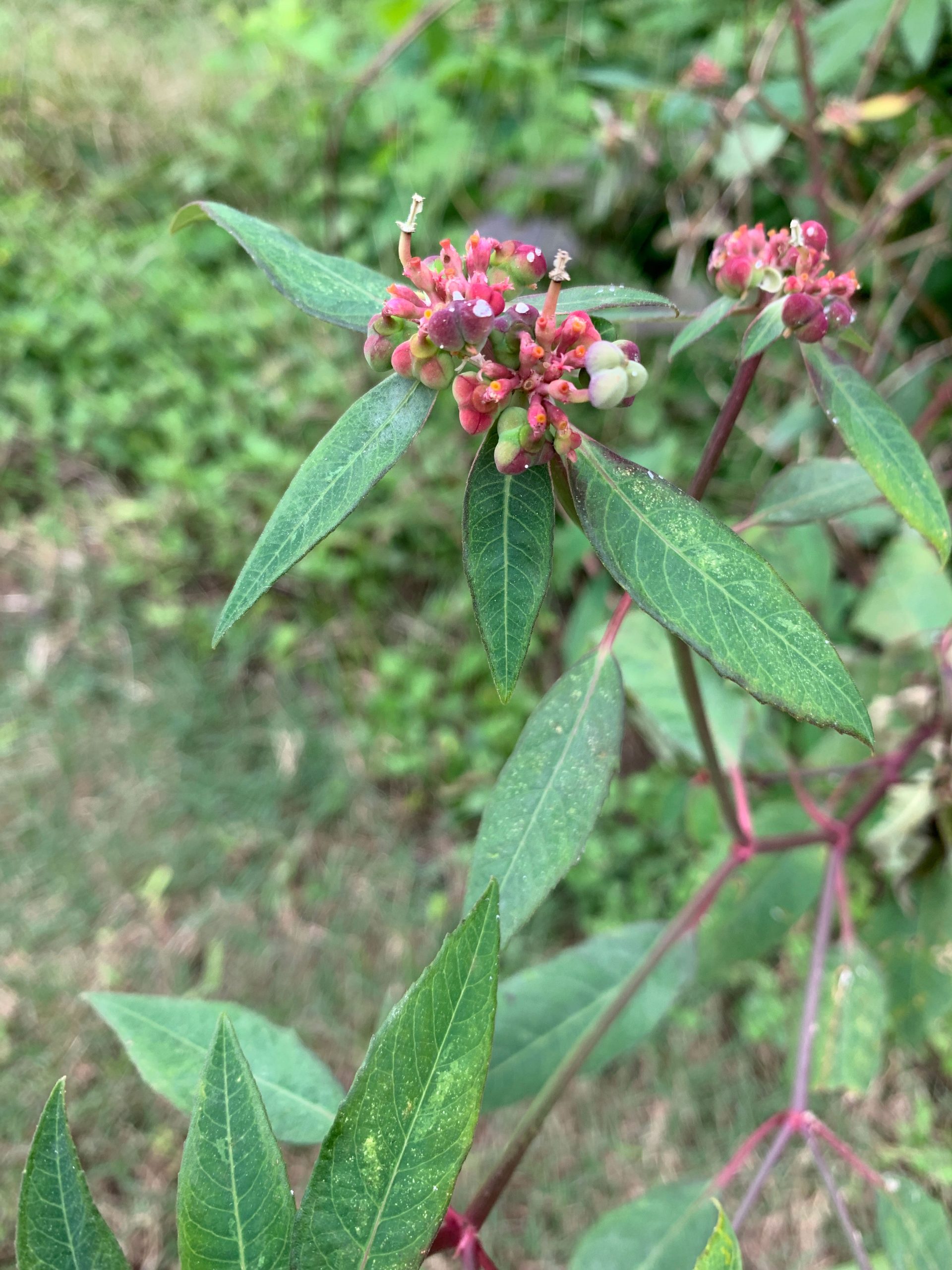
Painted spurge
It barely has flowers. The tiny flowers are so basic they lack petals. You’ve got a pistil surrounded by anthers. The red things that caught your eye in the photo are not the flowers. They are young seeds. The “flowers” are sort of green. This demonstrates an important principle: What draws us to plants is not correlated with what draws insects. The huge petals and splashy colors that attract us are often invisible to pollinators. The signals that attract them are often invisible to us. We don’t smell the pheromones, we don’t see the UV signals and we don’t taste the nectar. What we do do, however, is greatly influence the appearance of garden plants to please ourselves. While doing so, we often breed out what made the plant a pollinator in the first place. A word to the wise, let the bees tell you what to plant.
The spurge, by the way is all over the Park right now.
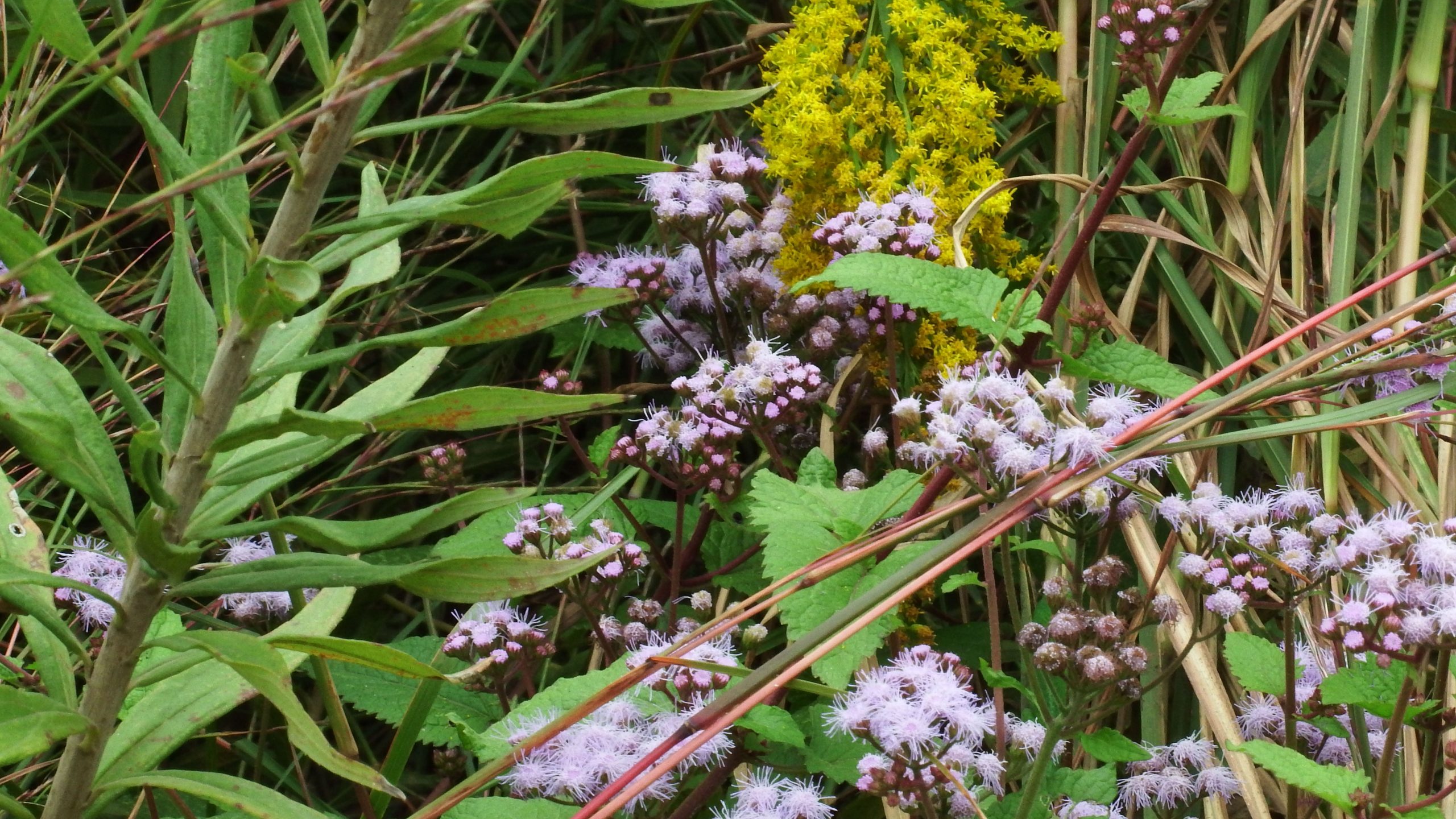
Blue mistflower and goldenrod
Also all over the Park right now are blue mistflowers. These are a bright purple that shines against the omnipresent goldenrod. These are fabled pollinators, extolled in every Texas garden guide. The mistflowers are in lots of places, keep an eye out for flashes of bright lavender.
There are no butterfly caterpillars that use the blue mistflower as a host plant, but quite a few moth caterpillars happily munch away on them. I found this saltmarsh moth caterpillar east of The Dunlavy.
Because the day wasn’t packed enough, I saw a red-tailed hawk near the Rosemont bridge. I’m not sure what to make of it, but this is the third photo I have taken of a red-tailed hawk in or near the Park with very pale coloration. The underside of the tail in all three is white. Possibly it is the same bird three times. If so, good news on healing up that right leg. If these are different birds, we are perhaps becoming a bit of an outlier with regard to plumage.
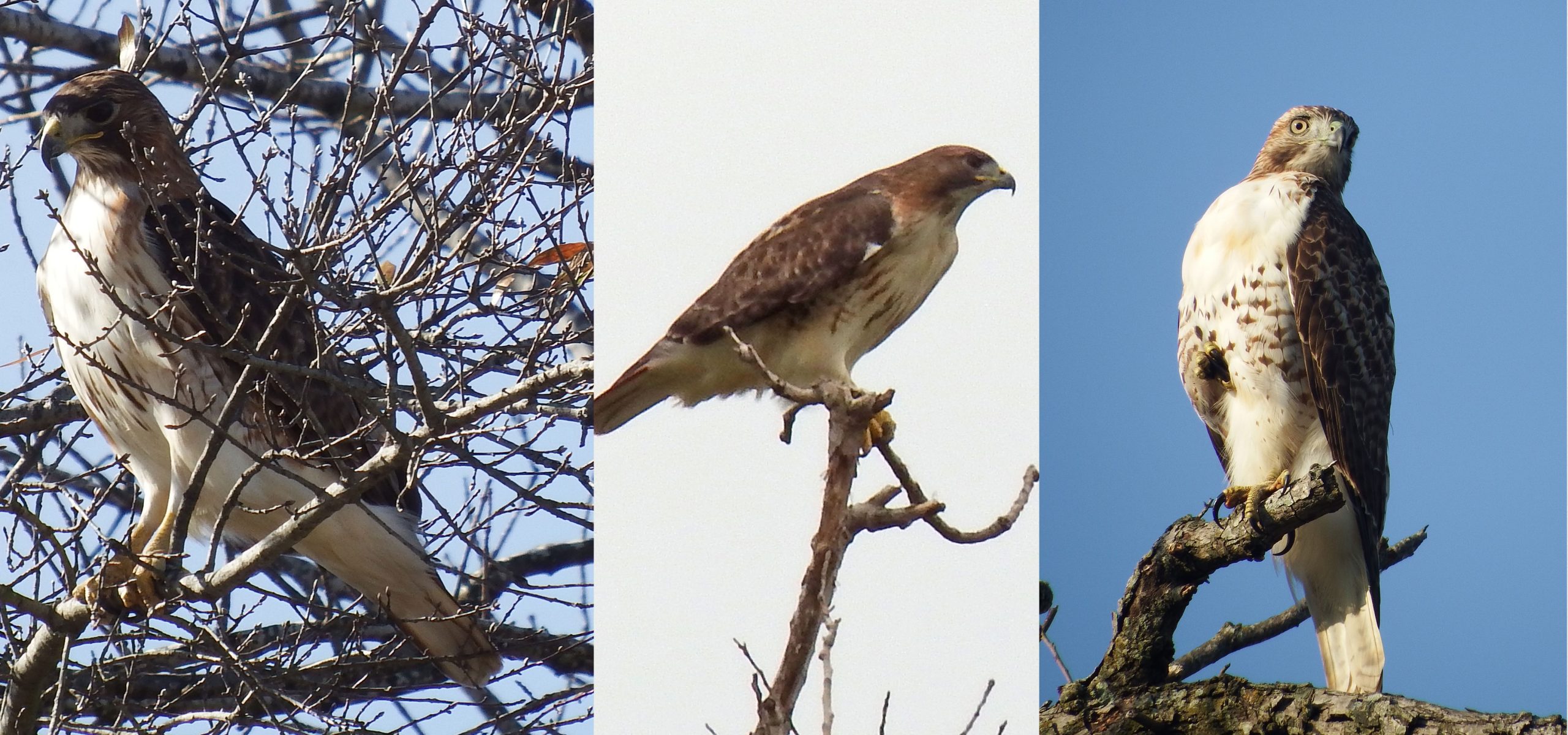
Hawk on the left was photographed February 2018. Center hawk was yesterday, right hawk photographed in October this year.
I found three big wading birds Monday, a great egret, a snowy egret and a great blue heron. The first two should be very common in the Park, the great blue was never here in great numbers. As recently as last year, I could easily spot three each of snowy egrets and great egrets and with a bit of effort could likely have gotten five. Adding to my concern, I have seen only one black-crowned night heron in the last two months. I didn’t see any yesterday. I don’t know why our populations are in decline. This doesn’t seem to be the case city-wide, at least on casual observation. Another thing I will keep my eye on. But my heart was lifted to find the three.
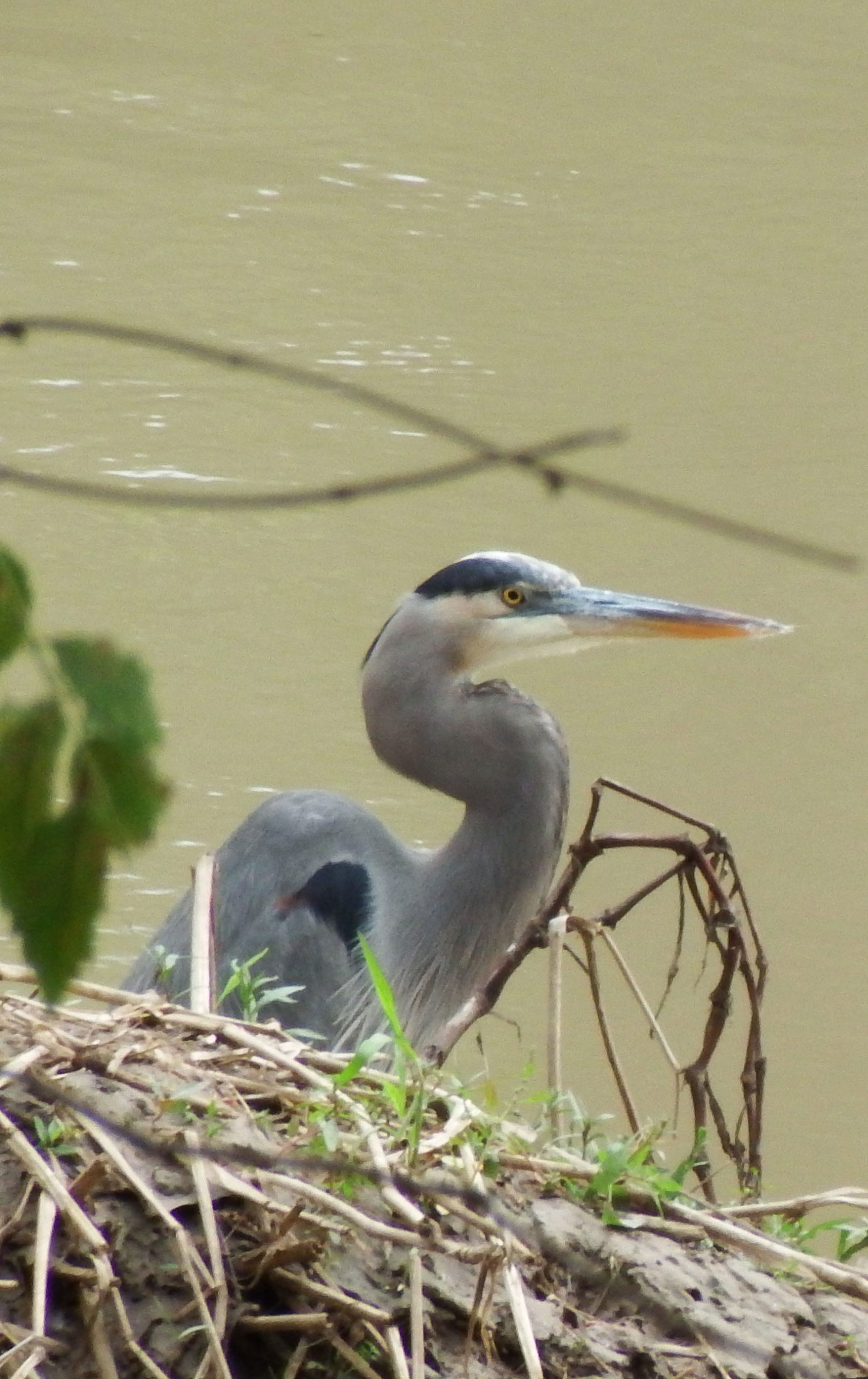
Great blue heron

